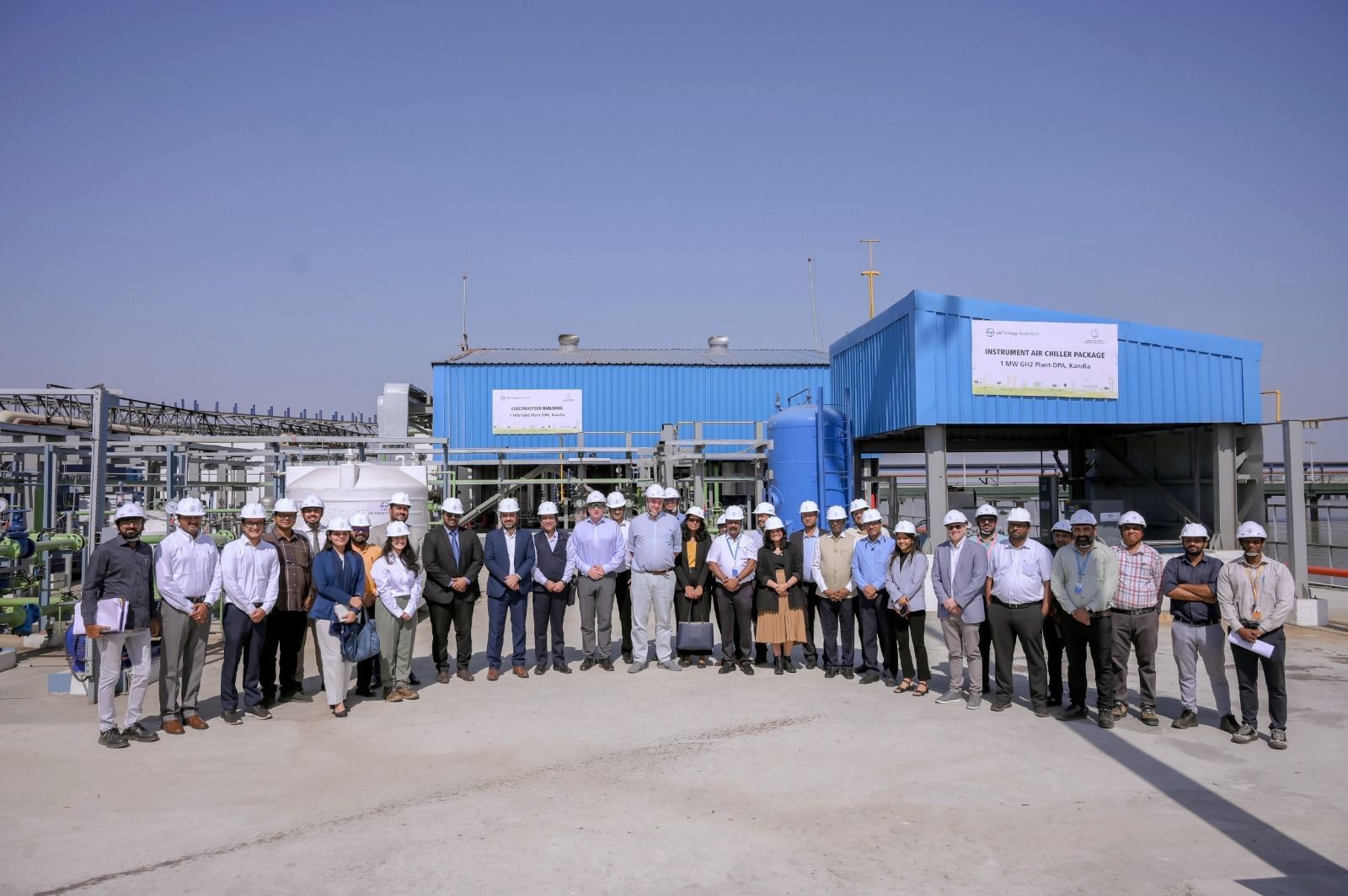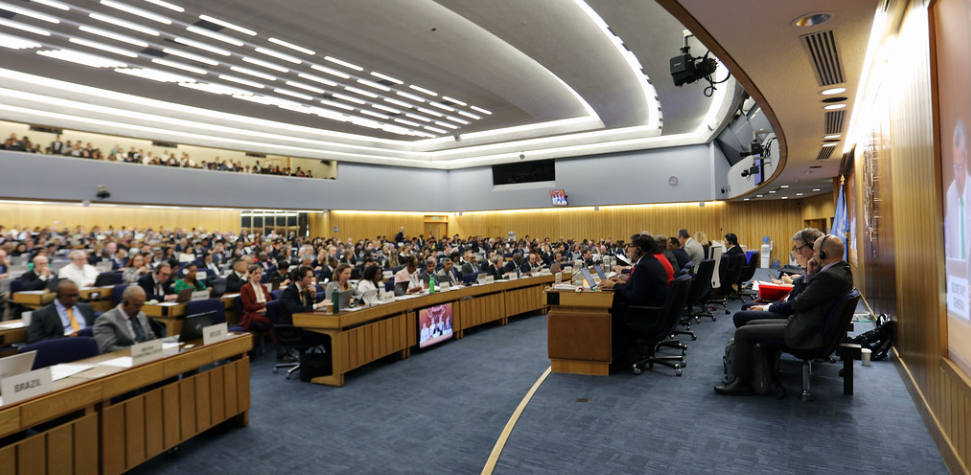Ship Breaking Facility Proposal Sparks Controversy in Port Mellon’s Hillside Industrial Area

In the buzzing industrial landscape of Port Mellon’s Hillside area, a contentious proposal is gaining momentum, seeking to rezone a property for the establishment of a shipbreaking facility. The Sunshine Coast Regional District (SCRD) is currently navigating the pre-application phase of this endeavor, as Amix Real Estate Holdings spearheads the initiative.
Amidst the unfolding developments, Amix Real Estate Holdings reports that efforts to finalize the rezoning request are well underway. While the specific details of the proposed changes remain undisclosed due to the pre-application phase, Mark Annable, a spokesperson for Amix, sheds light on the company’s commitment to conducting a comprehensive environmental assessment of the site. Additionally, Amix intends to furnish geotechnical and riparian area reports, as mandated by a pivotal Dec. 14 decision by the SCRD board.
ALSO READ : Navigating the Future: Transforming Ship Recycling in Turkey
During the December meeting, the SCRD board steadfastly upheld a requirement for these additional studies, rebuffing an appeal from Amix. The necessity of providing such reports was communicated to the company in a proposal pre-application outcome letter dated September 29. In response, Annable, in an email statement, acknowledged Amix’s willingness to comply with the riparian and geotechnical assessment requirements. He emphasized that a significant portion of this work is already completed. However, he expressed disagreement with the SCRD board’s decision on December 14, while affirming respect for it. Annable further assured that Amix would undertake the environmental assessments as requested, acknowledging that this decision would inevitably extend the timeline and escalate the costs associated with the rezoning application.
The proposal to rezone the property for a shipbreaking facility has triggered a blend of anticipation and concern among stakeholders in the Port Mellon community. As the pre-application phase unfolds, the veil of uncertainty shrouding the details of the proposed changes continues to captivate the attention of residents, environmentalists, and industry observers alike.
While the specifics of the proposal remain clandestine, it is evident that Amix Real Estate Holdings is gearing up to navigate a rigorous evaluation process. The commitment to conduct professional environmental assessments, coupled with geotechnical and riparian area reports, aligns with the stringent requirements laid out by the SCRD board in their December ruling.
The decision to mandate these additional studies stems from a careful consideration of environmental impact and geological factors. By upholding this requirement, the SCRD board underscores the importance of a thorough understanding of the potential repercussions associated with the establishment of a shipbreaking facility in the Hillside industrial area.
Amix Real Estate Holdings finds itself at the crossroads of compliance and disagreement with the SCRD board’s decision. While acknowledging the delay and increased costs incurred due to the additional assessments, the company is resolute in its commitment to adhere to the stipulated requirements. This stance reflects a delicate balance between corporate interests and community concerns, as Amix seeks to navigate the complex terrain of rezoning in a responsible and transparent manner.
The ripple effect of this proposal extends beyond the immediate stakeholders involved. The Port Mellon community stands on the precipice of potential economic growth, intertwined with the challenges posed by environmental impact and community well-being. The establishment of a shipbreaking facility could herald job opportunities and economic development, but it also raises questions about the long-term ecological footprint and the potential disruption to the existing fabric of the community.
As Amix progresses through the pre-application phase, the spotlight turns to the meticulous environmental assessment that will unfold. The company’s commitment to this process is commendable, recognizing the need for a comprehensive understanding of the site’s ecological dynamics. The inclusion of geotechnical and riparian area reports underscores the multifaceted nature of the evaluation, taking into account not only environmental impact but also geological stability and watercourse considerations.
The disagreement between Amix and the SCRD board introduces an element of tension into the narrative. While Amix may not concur with the board’s decision, the company’s willingness to comply signifies a recognition of the regulatory framework governing such initiatives. This dance between corporate interests and regulatory oversight is a familiar theme in the realm of development projects, where the pursuit of economic objectives must coexist with environmental stewardship.
The September 29 outcome letter, notifying Amix of the need for additional reports, serves as a crucial document in this unfolding drama. It encapsulates the regulatory expectations and sets the tone for the ensuing negotiations and assessments. The acknowledgment by Amix that much of the required work is already completed hints at a proactive approach to compliance, even in the face of disagreement.
The delayed timeline and increased costs associated with the rezoning application raise questions about the broader implications for both Amix and the Port Mellon community. A careful balance must be struck between expeditious development and the thorough evaluation of potential risks and benefits. This delicate equilibrium requires navigating the complexities of bureaucracy, community sentiments, and environmental imperatives.
The Port Mellon community, as a key stakeholder in this proposal, must grapple with the dual realities of economic potential and environmental responsibility. Job creation and economic growth are enticing prospects, but the potential consequences for the local ecosystem and quality of life cannot be overlooked. The community’s voice becomes integral in shaping the trajectory of this proposal, emphasizing the importance of transparent communication and community engagement.
Environmentalists and conservationists, too, play a pivotal role in this discourse. Their vigilance ensures that the proposed shipbreaking facility undergoes rigorous scrutiny, mitigating potential harm to the surrounding environment. The inclusion of a professional environmental assessment aligns with the expectations of environmental advocates, who seek assurances that development projects adhere to sustainable practices.
As the proposal enters the environmental assessment phase, questions about the long-term impact on the Port Mellon ecosystem come to the forefront. The riparian and geotechnical reports will shed light on potential challenges and mitigation measures, offering a comprehensive view of the project’s implications. This phase marks a critical juncture where the ecological well-being of the area takes precedence, setting the stage for informed decision-making.
In navigating the complexities of rezoning, the Port Mellon community and Amix Real Estate Holdings find themselves intertwined in a shared destiny. The decisions made in the coming months will shape not only the industrial landscape but also the social and environmental fabric of the region. The challenges posed by disagreements and additional requirements underscore the intricate dance between development aspirations and regulatory realities.
The shipbreaking facility proposal in Port Mellon’s Hillside industrial area embodies the nuanced dynamics inherent in development projects. It is a tale of ambition, regulation, and community resilience. As the narrative continues to unfold, the spotlight remains on the delicate balance required to harmonize economic progress with environmental and community well-being. The coming chapters will reveal whether this proposal becomes a blueprint for responsible development or a cautionary tale of uncharted industrial ambitions.
Author: shipping inbox
shipping and maritime related web portal








